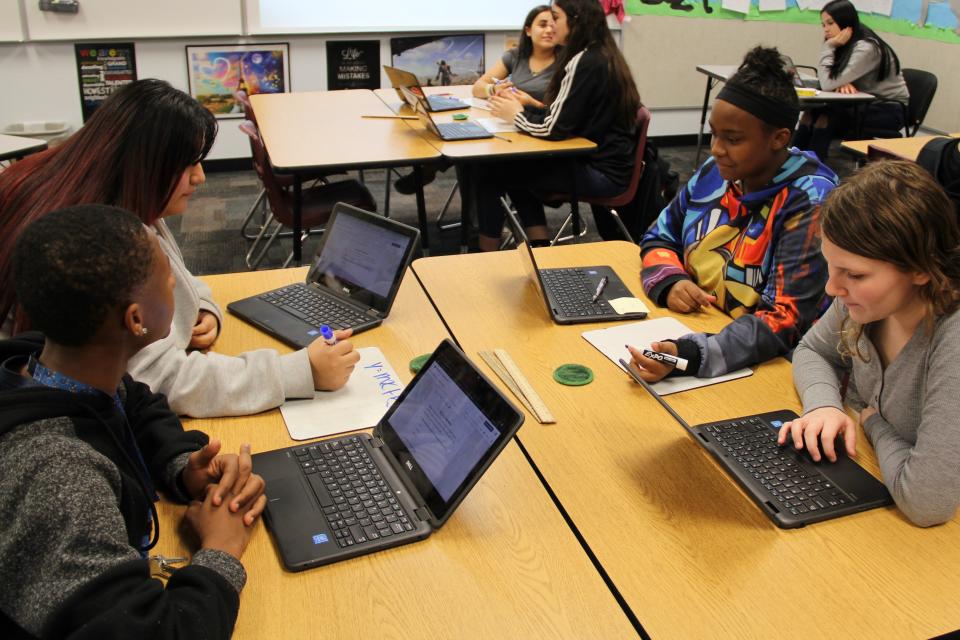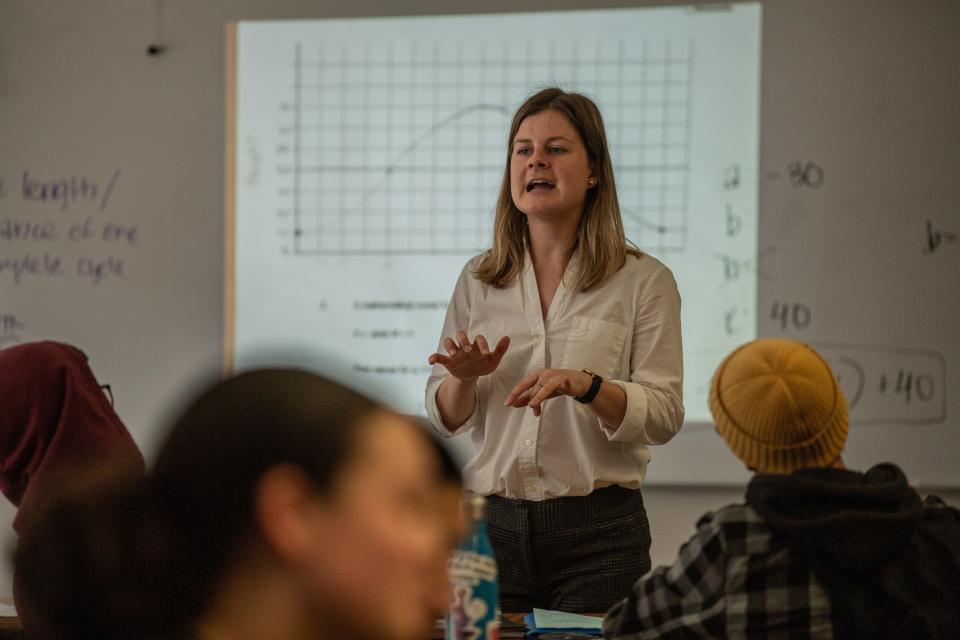You're not imagining it: Kids today really are smarter than we were. Test scores prove it.
According to the just released National Assessment of Educational Progress, known as the nation’s report card, 9-year-old students suffered over the past two years the worst declines in student achievement in math and reading in over half a century. What’s worse, the lowest performing ones suffered the most serious shortfalls.
But Americans can still take comfort in the fact that, as of 2017, before COVID-19 struck, U.S. students for 50 years made remarkable test score gains in math and steady ones in reading, our research shows. Gaps between white students and students of color closed by one-half or more in the pre-COVID years, and progress was made toward closing the achievement gap between the “haves” and “have-nots.”
Today's children know more than their parents. And both are outperforming their grandparents. This is not a joke. Pre-pandemic, Generation Z was doing strikingly better at math than did the early baby boomers, and reading scores were up as well.
The pandemic, with its shifts to online learning, reversed some of these gains.
US Education Secretary Cardona: COVID-19 hurt student academic achievements, but we can recover
Even so, long-term trends in American education are more upbeat than generally recognized. Acknowledging that reality could give teachers, parents and leaders the confidence needed to restore our schools as students return to the classroom this year.
Time to recognize the achievements
Unfortunately, the country’s progress in student performance has gone largely unacknowledged. Instead, we have reports and books with disturbing titles: “A Nation at Risk”; "The Dumbest Generation"; "The Decline of Intelligence in America." Nor has there been much recognition of equity gains. Many wonder whether the country has moved much beyond where it was when the Emancipation Proclamation was signed. Conservative pundit Charles Murray and liberal-leaning scholars like Robert Putnam and Sean Reardon all agree that socioeconomic gaps in achievement are widening.

But our close look at 7 million student tests administered by five government surveys to students born between 1954 and 2007 reveals a considerably more positive portrayal. The median math performance of those tested between ages 9 and 17 rose dramatically. For those in fourth to eighth grade, the scores increased by no less than four years’ worth of learning over the past half-century, and reading skills improved by just one years’ worth of learning
Why are math scores accelerating at a much faster rate than those in reading? The answer, we believe, is found in recent research on human intelligence. A few decades ago, IQ was considered a genetically determined constant, but James Flynn, a New Zealand scholar, discovered in the 1980s that IQ was increasing by 3 points per decade.
Q&A with teachers union leader: Attack on teachers has 'never been as bad as right now'
In 2015, Jakob Pietschnig and Martin Voracek confirmed Flynn’s results by conducting a meta-analysis of 271 studies of IQ around the world. They also found that one type of intelligence, fluid reasoning, or the ability to analyze abstract relationships, was rising much faster than another, termed crystallized knowledge, or the ability to synthesize and interpret observed relationships in the environment. The rates of change parallel almost exactly the steep growth in math, lesser growth in reading we observe.

The differential growth could be due to enhanced brain development before birth and in early childhood. Brains are muscles that, like other muscles, are affected by a child’s nutrition, infections and exposures to air pollution, lead poisoning and other environmental risks. Well-nourished children protected from disease and harmful chemicals enjoy healthier bodies, grow taller, run faster and have greater mental capacity.
Strangers are spying on your child. And schools are paying them to do it.
Neither height nor brain capacity can increase indefinitely, so one expects that the benefits for fluid reasoning of more than a half-century of improved health and nutrition to diminish. And, indeed, the rate of progress in math is less per decade for those born as of 1990 than for those born earlier. Meanwhile, gains in reading since 1990 have accelerated.
A more equitable equity story
The equity picture is also not as disgraceful as conventional wisdom would have it. The rate of progress over the past half-century by Black students exceeds that of white students by two years’ worth of learning or about half the original learning gap between the two groups. This could be due to improvements in the income and well-being of Black families, or to changes at school, including desegregation, Head Start and compensatory education.
Opinion alerts: Get columns from your favorite columnists + expert analysis on top issues, delivered straight to your device through the USA TODAY app. Don't have the app? Download it for free from your app store.
Much the same holds for the Hispanic-white gap in math. However, gains by Hispanic students in reading, though greater than that of white students, are less pronounced than for Blacks, perhaps because of the language barrier.
When it comes to Asians, the shift over five decades amounts to nearly two years’ worth of learning in math and three years’ worth in reading over and above gains made by white students. That success story is well-known.
To explore socioeconomic disparities, we compare trends in achievement made by students coming from households in the top 25% and lowest 25% of the socioeconomic distribution. For those tested in elementary school, the gap across the socioeconomic divide closes over the 50-year period by 1.5 years’ worth of learning in math and three years’ worth in reading.
My students struggle to pay for college. Student loan forgiveness doesn't fix the system.
Unfortunately, these gains attenuate as students enter early adolescence. For those tested near the end of high school, rates of progress by more advantaged students exceed those from low socioeconomic backgrounds (though not by much). Failure to close the socioeconomic achievement gap in high school might be due either to a decline in school quality or changes in peer culture. Or it might be due to a decline in the seriousness that older adolescents give standardized tests.
Unfortunately, the pandemic has jeopardized these steps forward. But the long road of progress on multiple fronts gives hope that the current crisis, too, shall pass – if parents, teachers and leaders all regain the poise and self-assurance our schools need for continued success.
Paul E. Peterson is a professor and director of the Program on Education Policy and Governance at Harvard University and a senior fellow at the Hoover Institution, Stanford University. M. Danish Shakeel is a professor and director of the E.G. West Centre for Education Policy at University of Buckingham, United Kingdom.
You can read diverse opinions from our Board of Contributors and other writers on the Opinion front page, on Twitter @usatodayopinion and in our daily Opinion newsletter. To respond to a column, submit a comment to letters@usatoday.com.
This article originally appeared on USA TODAY: Student test scores: Gen Z outperforms baby boomers in math, reading

